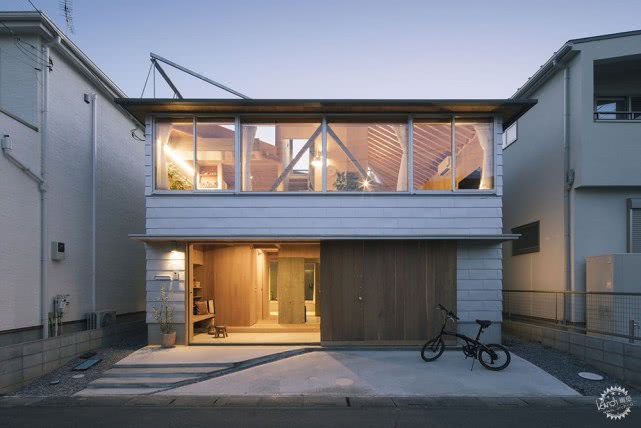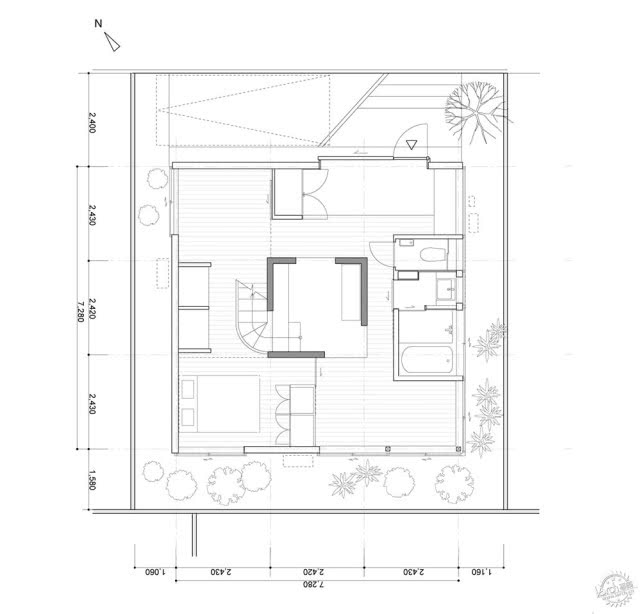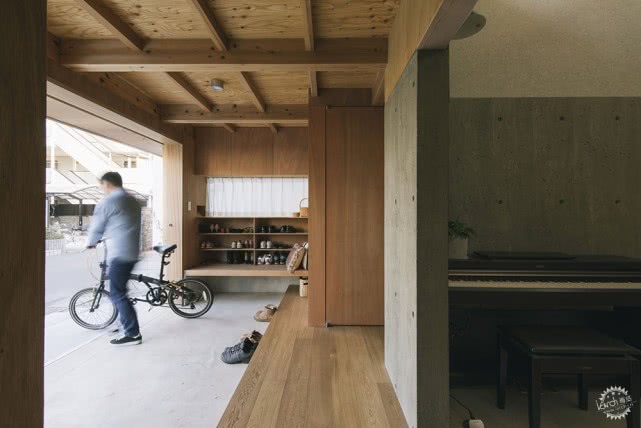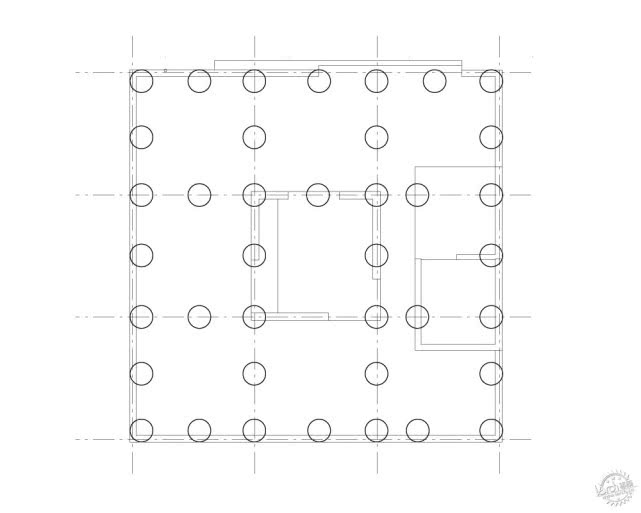Kita-Koshigaya住宅设计
House in Kita-Koshigaya / tamotsu ito architecture office

来自建筑事务所的描述。该建筑事务所在东京郊区设计了一座独栋住宅。这栋住宅可以让这对年轻夫妻的郊区生活每周度过三天以上。这种改变使建筑事务所设计出新的住宅类型(或是非当地风格的住宅类型),其预算与邻近批量建造的住宅相同。建筑需要在不增加建筑基底面积的情况下设计出更多样的空间来承载业主工作和多种业余爱好活动。
Text description provided by the architects. A single-family house designed in suburbia of Tokyo. Instead of regarding a suburb as a subordinate of metropolis, this young couple’s suburban life could be truly centered by working more than three days a week from home. This change made us to come up with a new (or non-modern) house-type with the same budget as the neighboring mass-produced houses. It required much more diverse spaces to accommodate their working environment and places for multiple hobbies (indoor-outdoor), without increasing total floor area.




该项目采用九个小正方形的网格平面,其计算基于日本建筑中的两种模数:2430mm模数和1820mm模数,即2430 x 3 = 1820 x 4 = 7280mm。建筑的楼层模数采用2430mm,而墙体则为1820mm模数,共同解决建造中住宅面积的经济性问题或者设计惯例。
The tiny nine square grid plan is applied, whose dimensioning is based on two kinds of modules in Japanese construction; 2430mm module and 1820mm module. 2430 x 3 = 1820 x 4 = 7280. 2430 became the module of floors, while 1820 became the module of walls, dealing and playing with economy/convention of dimensions in construction.

通过堆叠的网格,整个方案实现了对不同活动的零碎空间的整合。2430 x 2430mm的模数对于房间而言太小,但作为个人的活动单元又太大。设计的网格与行为活动和房间大小均无关。因此,该住宅严格的建筑构造,将唤醒一个人对于空间的想象,连接彼此的行为活动和室内外空间,不会出现因为设置太多空间而不能在室内随时活动的情况。
The overall plan is made as a collective of fragmented places for different behaviors throughout the stacked grid. 2430 x 2430 is too small as a room, but too big as a spatial unit for one person’s activity. The grid corresponds neither to behaviors nor to rooms. Therefore, this house with rigid tectonics would invoke one’s imagination for the production of space, linking one behavior to another, inside and outside, without fitting too much to what can happen inside time to time.



设计保留了建筑结构的简洁性,同时累积融合其空间特色的决策。例如,顶层以45度分隔,形成二层的天花板,同时也为起居空间带来南向采光。室内裸露的混凝土为住宅的地基,看起来与外面邻近的地板相似,但内部地板更接近一层的地面,与周围窗户产生平面差异。
Without losing the simplicity of construction, the design accumulates decisions to hybridize its spatial qualities. For instance, the roof plan is separated in 45 degrees to create low/high ceiling space at 2F, as well as inviting the southern light towards the living-dining area. The concrete exposed to the interior is constructed as a foundation. The foundation looks similar to neighbors from the outside, but the floor levels inside are shifted closer to the ground, creating the level difference from surrounding windows.

入口设计来源于日本旧城市住宅或者农户住宅设计,其大门有两种开启系统,通常情况下作为铰接的门使用,特殊情况下变成连接室内外的大滑动门。客户为我们带来一种日本郊区生活的非当代风格的想象,设计是自然和城市环境的融合,也是城市和自然的中间点。在该项目上我们尝试从生活的新旧历史和建筑语言中吸取灵感,而不是仅仅用当代的建筑语言去完成它。
Learning from the old townhouse / farmer’s houe type in Japan, the entrance door has two way opening system, normally working as a hinged door, occasionally working as a large sliding door to connect the “doma” space with the outside. The clients brought us a non-modern imagination of the suburban life in Japan, as a hybrid of natural and urban environment, and as a middle point between metropolis and nature. Our attempt in this project is to respond with non-modern architecture to amplify the imagination, learning from new and old histories of lifestyles, and architectural languages.








